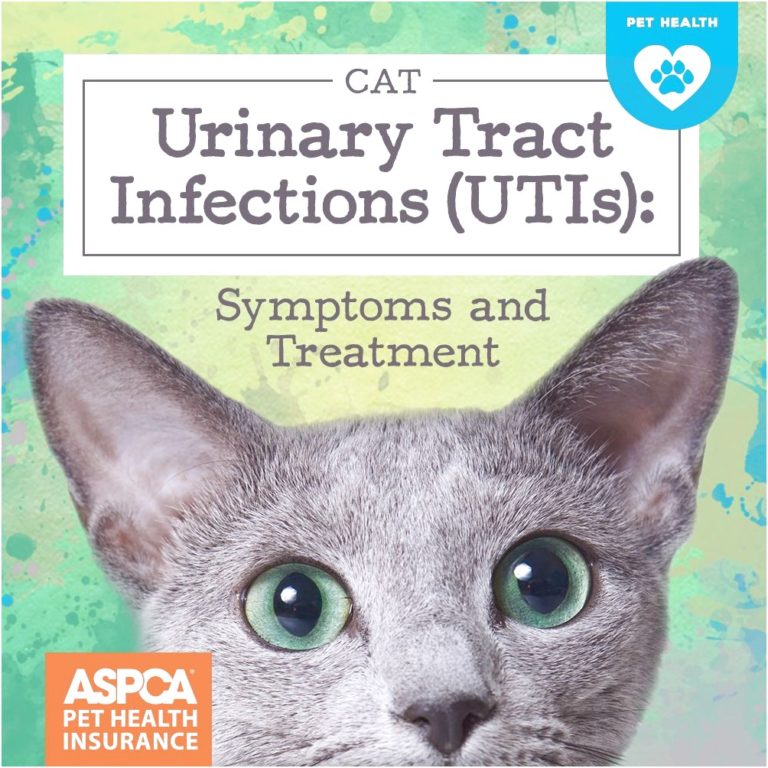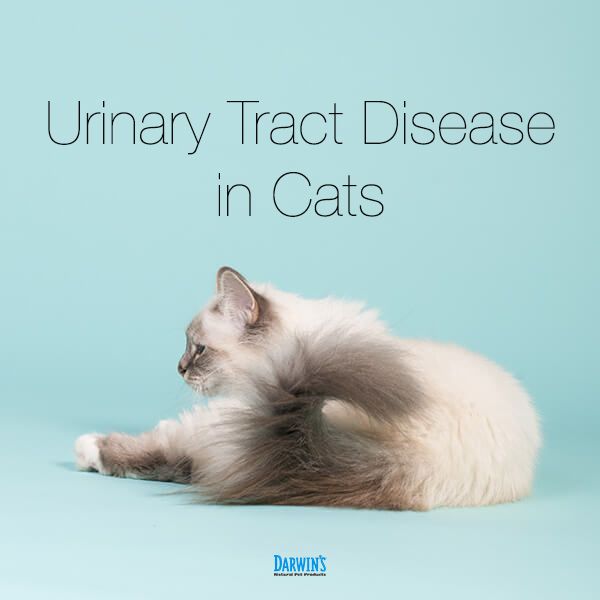Does My Cat Have A Urinary Tract Infection
While urinary tract problems are often seen in cats, your cat is more likely to suffer from a urinary tract disease than an infection.
That said, when urinary tract infections do affect cats it is typically in cats over 10 years of age who are suffering from an underlying endocrine disease such as hyperthyroidism or diabetes mellitus.
The most common symptoms of urinary tract infections in cats include straining to urinate, reduced amounts of urine, not urinating at all, pain or discomfort when urinating, passing urine tinged with blood and urinating around the house or outside of the litter box. Nonetheless, these very same symptoms can be an indication of a feline lower urinary tract disease or FLUTD.
What Is Feline Lower Urinary Tract Disease
Feline lower urinary tract disease describes a variety of conditions that affect the bladder and urethra of cats. Cats with FLUTD most often show signs of difficulty and pain when urinating, increased frequency of urination, and blood in the urine. Cats with FLUTD also tend to lick themselves excessively and may urinate outside the litter box, often on cool, smooth surfaces like a tile floor or a bathtub.
While FLUTD can occur at any age, it is usually seen in middle-aged, overweight cats that get little exercise, use an indoor litter box, have little or no outdoor access, or eat a dry diet. Factors such as emotional or environment stress, multi-cat households, and abrupt changes in daily routine may also increase the risk that a cat will develop FLUTD.
Major signs of feline lower urinary tract disease include:
- Straining to urinate
- Frequent and/or prolonged attempts to urinate
- Crying out while urinating
- Excessive licking of the genital area
- Urinating outside the litter box
- Blood in the urine
Note that cats with a urethral obstruction will also show these signs but will pass little or no urine and become increasingly distressed. Urethral obstruction is seen more often in males than female cats due their longer, narrow urethra. A urethral obstruction is an emergency and requires immediate veterinary treatment.
A Healthy Diet Goes A Long Way
Believe it or not, your cats diet can increase or decrease their risk for UTIs. Your vet may suggest that you feed your cat a diet with less minerals these minerals are often found in commercial dry cat food. Consider feeding your cat a canned diet instead of a dry diet. If they prefer dry food, make sure your vet approves the quality and try to mix in a little bit of wet food each day.
While your cat may watch you eat dinner, never feed your feline table scraps.
Recommended Reading: What Antibiotics Treat Bladder Infection
Accidents Outside The Litter Box
When your cats urge to pee is a constant and painful struggle, you cant expect them to make it to the litter box every time.
If theyre on the other side of the house, and the pain gets to be too much, they wont make it to their litter box in time. If having indoor accidents is abnormal for your cat, a urinary tract infection could be to blame.
Are Weak Legs A Cat Uti Symptom

Urinary tract infections and other forms of urinary tract disease will not paralyze or weaken your cats legs. However, some cats may take on an odd gait or hold their bodies differently due to the pain of FLUTD.
If the disease is left untreated for a day or more, your cat may feel extremely fatigued and might not be able to walk normally.
Recommended Reading: What To Do For A Bladder Infection
Diagnosing Cystitis Bladder Infections And Utis In Cats
Your vet may recommend testing a sample of your cats urine to determine whether she has an infection, which can include cystitis, urinary tract infections or stones, or bladder infections. Depending on the cause, he or she may prescribe anti-inflammatories and/or antibiotics to clear up the infection, or recommend a special diet to help dissolve the urinary tract stones.
Pain or difficulty urinating may be the first sign that your cat has a urinary tract infection or bladder infection.
Causes Of Bladder Inflammation In Cats
Idiopathic cystitis by definition has no known cause, but there are conditions that felines can have that will cause inflammation of the bladder. Medical conditions such as crystalluria, or the formation of crystals in the urine, as well as environmental factors, can cause cats to experience cystitis.
Causes of feline cystitis can sometimes include:
- Crystals or stones forming in the urine
- Bacterial infection
- Tumors or lesions of the urinary bladder
- Stress from other cats or environmental alterations
- Moderate to extreme obesity
Recommended Reading: How To Cure A Bladder Infection At Home Fast
Preventing Urinary Tract Infections In Cats
Your vet may recommend a diet that helps not only with healing but prevents recurrence as well. Certain stone-dissolving foods can help prevent crystals from forming in your cats urinary tract. There are also commercial foods that promote urinary tract health. Consult your vet on what type of food is right for your cat.
Feeding your cat a canned-food diet or mixing wet food with dry kibble helps provide additional hydration.
Keeping your cat at a healthy weight is also important overweight/obese cats tend to have more health issues than cats of a normal weight. Provide your cat with toys that stimulate physical activity.
Because anxiety may play a part in urinary tract disease, its important to keep your cats stress level as low as possible. Cats do not like change, no matter how subtle it may be, so try to keep changes to your cats routine and/or environment to a minimum.
Signs Of Urinary Tract Infections In Cats
Sharing is caring!
Urinary tract infections in cats are one of the leading reasons why cat moms and dads rush their feline family members to the vet. Urinary disease is excruciatingly painful, and it can lead to several other serious health issues.
And while we all want to keep our cats healthy, we have a big problem.
Cats are notoriously good at hiding their pain. They face illnesses and injuries with stoic strength, and that can leave us humans grasping for straws when things suddenly go wrong. The best way to help your cat is to recognize the early signs that theyre in pain.
Read Also: What Gets Rid Of A Bladder Infection
Treating Urinary Tract Infections In Cats
If you see warning signs of a urinary tract infection in your cat, it’s important to contact a veterinarian. The vet will do a physical exam and likely collect a urine sample for urinalysis. If a UTI is the prime suspect, your vet may prescribe antibiotics even before receiving results from your cat’s urine test.
With a vet’s diagnosis in hand, you still play a crucial part in helping treat your cat at home. If your vet has prescribed an antibiotic, you’ll need to make sure to give all the medicine for as long as recommended.
“If your cat is diagnosed with a bacterial condition, it is imperative that you give the medication exactly as instructed,” says Kathryn Primm, DVM at Applebrook Animal Hospital in Ooltewah, Tennessee. “Otherwise, you risk only killing the part of the bacteria that are most susceptible to the drug and leaving the others to reproduce.”
How long your cat is on antibiotics for a UTI is best determined by your vet. If you’re having trouble giving your cat the medicine, let the vet know. Pills or liquids are options, but an unfinished round of antibiotics may give the bacteria a chance to return, and stronger bacteria can also lead to new drug-resistant strains that harm humans and pets.
Urinary issues can be complex, and each cat is different. A trusting relationship with your veterinarian is your very best tool to manage urinary disease in cats.
RELATED:Cat Dehydration: Symptoms and Treatments to Get Your Kitty More Fluids
Cystitis In Cats Top Facts
- Feline idiopathic cystitis in cats is inflammation of the bladder with an unknown medical cause
- Cystitis in cats is very common and easily treated with anti-inflammatory medication, but can recur
- Stress is thought to be the most significant cause of cystitis in cats, so there is lots owners can do to help
- But owners of male cats must look out for warning signs of a blocked bladder which is a serious, life-threatening condition, which can have the same symptoms of cystitis in cats
You May Like: How To Avoid Bladder Infections
Causes Of Bladder Stones In Cats
No two cats are completely alike. Since there are several different types of bladder stones that can form, the cause of bladder stones in cats can vary. Some of these causes may include:
- Excess phosphate, ammonium, or magnesium in the urine
- Urine pH out of balance
- Dietary supplements or drugs that affect the urine
- Congenital liver shunt
- Breed predisposition
Do cats get bladder stones at certain ages? Cats can develop bladder stones at any age. Some types of stones are more likely to form at different life stages. The risk of developing calcium oxalate stones, for example, increases as your cat ages. These commonly show up in cats between 5 and 14 years old.
Do some cats have a higher risk of getting bladder stones? Common belief has suggested that neutered male Burmese, Persian, Siamese, and Himalayan cats may be genetically predisposed to developing calcium oxalate stones, but more research is needed to prove this for sure. Overweight cats, male cats, and older cats are more likely to develop these stones as well.
Continued
Is My Cat At Risk Of A Urinary Blockage

Male cats suffering from feline idiopathic cystitis, or any type of cystitis, are at risk of developing a urinary blockage, which is a serious medical emergency. It is therefore crucial that you are certain that your cat is able to urinate. If he isnt able to, or if you are unsure, you should take your cat to the vet immediately. A bladder blockage can cause dangerous toxins to build up in the system which can kill a cat if left untreated, so any delay can be fatal. Other symptoms to look out for include vomiting, nausea and appetite loss. Male cats can also suffer a urinary blockage without having cystitis and the signs are the same.
Recommended Reading: Best Vitamins For Overactive Bladder
Which Cats Are Most At Risk For Utis
While any cat can get a UTI, some cats are more susceptible to infection than others. For example, older cats and cats who form bladder stones diabetes mellitus are more at risk for developing a UTI. The cat breeds thought to most commonly suffer from bladder stones include Himalayans, Persians, and Siamese cats. In addition, some hormonal conditions, such as Cushings disease, are at higher risk for UTI.
While not a UTI, its important to know that male cats are at risk for a life-threatening condition called urethral obstruction, as their urethras are longer and thinner than those of female cats. Due to a more narrow passage, the male urethra is more likely to be blocked. The signs of a urethral obstruction can mimic the signs of a UTI, so if your male cat is ever straining in the litter box, its important to seek veterinary attention immediately.
Possible Complications Of Bladder Stones In Cats
Sometimes, bladder stones can be the sign of a bigger health concern your cat already has. And if bladder stones go untreated, they can cause other problems, too. Itâs important to get treatment to understand what caused them and to make sure they donât cause any more trouble.
Untreated bladder stones. Untreated bladder stones can lead to a number of problems. If bladder stones block the urethra, your cat may be entirely unable to urinate. This can lead to symptoms including vomiting, nausea, loss of appetite, and a firm, distended stomach. In this case, urine can back up into the kidneys. A complete urinary blockage is an emergency and can be fatal to your cat, so get medical assistance immediately.
Underlying health concerns. Yes, bladder stones are linked to other health problems. They can develop because of hyperthyroidism or diabetes, both of which may cause urinary tract infections and inflammation.
Also Check: Ways To Relieve Bladder Infection Pain
Blood In Cat Urine: 7 Common Causes
Urinary tract conditions are common in cats and can range from urinary tract infections to bladder and kidney stones. Cats who have had a urinary problem in the past are more likely to experience a recurrence in the future.
The presence of blood in a cats urine can be quite concerning for pet parents. There are a few different causes of blood-tinged urine in cats. Well look more closely at those causes and explain what steps you should take towards receiving a diagnosis and treatment plan.
You May Like: Better Woman Bladder Control Ingredients
What Causes Utis In Cats
In general, urinary tract infections develop when the urethra becomes contaminated with bacteria that normally colonize the rectum and surrounding area. Once in the urethra, the bacteria migrate upstream and take up residence in the bladder.
The presence of mineralized bladder stones or crystals in the urine may also be a cause of UTIs. Because the crystals are hard and irritating to the bladder, theres a greater risk for infection.
Don’t Miss: Can Second Hand Smoke Cause Bladder Cancer
Symptoms And Signs Of Blood Clots In Urine
Finding blood in the urine may be a symptom and could provide a clue to a disease. In people who have gross hematuria, there may be small blood clots in the urine. The amount of blood present in the urine does not necessarily indicate a serious condition. The urine may appear normal in people with microscopic hematuria, and the presence of red blood cells is discovered in a routine urine examination.
Many people with blood in the urine have no other signs or symptoms. However, the presence of other symptoms may be related to the underlying cause of bleeding. These symptoms could include:
- Pain in the side of the body below the ribs
- Pain in the back
- Frequent urination
- Urgency to urinate
The presence of one or more of these symptoms, together with blood in urine may depend on the cause of the bleeding. For example, people with kidney stones may experience severe pains in the side of the body which may radiate to the groin area or to the scrotum, in males. Fever with chills is more characteristic of urinary tract infection. Treatment of these conditions will depend on the actual cause of bleeding.
Vaginal Itching Is A Very Personal But Highly Annoying Problem That Many Women Have
These same women may also have a bladder or urinary tract infection.
Bladder infections typically do not cause vaginal itching, says Michael Ingber, MD, board certified in urology, female pelvic medicine and reconstructive surgery, and founder of The Center for Specialized Womens Health, division of Garden State Urology.
Dr. Ingber continues, Urinary tract infections occur when the bacteria in the vaginal region or perineum travel into the urinary tract through the urethra .
When there is overgrowth of this bacteria, this can become an infection.
Symptoms of a bladder infection are typically urinary symptoms such as urinary urgency, frequency, leakage or burning with urination.
Read Also: Kidney Stone Stuck In Bladder Symptoms
You May Like: Why Does My Bladder Feel Irritated
What Is A Cat Uti
A cat UTI is an infection in the urinary bladder that most often occurs when bacteria travel up the urethra and into your cats bladder, growing and reproducing to cause the infection. A UTI is one of several diseases of the lower urinary tract in cats grouped into a broader category of Feline Lower Urinary Tract Disease, or FLUTD. FLUTD can be caused by other urinary conditions including uroliths , urethral obstruction, or Feline Idiopathic Cystitis.
While UTIs are painful and uncomfortable, the good news is that theyre not contagious and often easily curable with antibiotics. Lets find out how you can prevent, identify, and treat a UTI in your feline friend.
Recovery And Management Of Utis In Cats

Most cats will fully recover within 7-10 days of developing a urinary tract infection, but they may need to remain on a canned diet for longer. Your vet may check a urine sample after treatment to determine if all the bacteria are gone.
Occasionally, cats will develop repeated urinary tract infections. Cats with recurring UTIs often require more testing to determine the underlying cause.
Also Check: What To Take For Bladder Infection Pain
Can A Uti Or Kidney Infection Cause Vaginal Bleeding
Ask U.S. doctors your own question and get educational, text answers â its anonymous and free!
Ask U.S. doctors your own question and get educational, text answers â its anonymous and free!
HealthTap doctors are based in the U.S., board certified, and available by text or video.
Dont Miss: Can Anxiety Cause Bladder Leakage
What Is A Bladder Infection
A bladder infection is an infection of the bladder, a hollow organ in the abdomen which collects and stores urine. Cystitis is the inflammation or infection of the bladder, so you may see cystitis, bacterial cystitis OR urinary tract infection used in place of or in conjunction with a bladder infection. Most cases of cystitis are idiopathic, which means the cause can not be determined. Bacterial infection of the cats bladder is less common in cats than it is in dogs. E. coli is the most common bacteria to infect the bladder.
There are different types of UTI depending on the location of the infection.
- Cystitis Infection of the bladder
- Urethritis Infection of the urethra
- Pyelonephritis Infection of the kidneys
Read Also: Does Smoking Affect Your Bladder